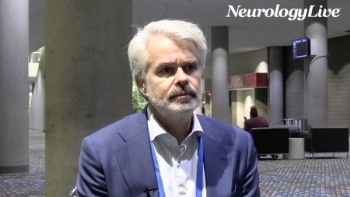
Patient Insights and Evolving Treatment Combos in PD
Pagan discussed unexpected findings from the InfusON study patient interviews that could influence how neurologists introduce CSAI therapy and how these insights, along with the latest data on MAO-B inhibitors, could shape future treatment combinations for Parkinson disease.
At the
In this segment, Pagan discussed recent findings supporting the safe and effective use of subcutaneous infusions for PD in outpatient settings, emphasizing a shift from traditional hospital-based titration protocols. He highlighted the feasibility of initiating treatment without hospitalization or antiemetic use, underscoring the role of nurse-led titration through programs like Circle of Care. Additionally, he reviewed data on once-daily combination therapy with rasagiline and pramipexole in newly diagnosed patients, noting its potential to achieve symptom control with lower doses and improved tolerability,
Transcript below edited for clarity.
Fernando L. Pagan, MD: As a clinician looking at the InfusON studies, the first thing that you should take away from these studies is that these subcutaneous infusions can be done outside of the hospital. That’s important, because we’ve seen such mixed practices in Europe over the last 30 years. This study was done here in the United States and was done in the outpatient setting. So, this is something that can easily be done using the Circle of Care program, where nurses go to the patients to help titrate up. I think that’s important. Also, a lot of these patients were titrated without the use of an antiemetic. So, those are the 3 takeaways here that there is a little bit of a shift in the paradigm of how things have traditionally been done with subcutaneous infusions for the past 30 years. So, that was a little bit different with InfusON.
As a clinician, it gives me comfort to know that I can start our patients without having to hospitalize them, without having to use an antiemetic, but take it slow. I can work together with a nurse to slowly increase the dose to the best therapeutic benefit. Communication is key with all the pumps so that you can titrate the medicine effectively and individualize the treatment. And with all dopamine agonists, you want to take it slow. When a patient is tolerating it but you still need more clinical effect, that’s when you go up. Once you get the best clinical outcome—the lowest effective dose with the least amount of adverse effects—that’s your dose. At that point, as you're titrating, you can also start reducing some of the medications. Again, customize the oral and subcutaneous infusion medications so our patients are taking the least amount of medicine to get the best quality of life possible.
The abstract—looking at rasagiline together with pramipexole once a day—daily dosing is very enlightening. It’s a very low dose of rasagiline compared with what we’ve generally used before, and a lower dose of pramipexole than we’ve used before. So, for newly diagnosed patients, you can give a once-a-day therapy with rasagiline and pramipexole to help improve the motor symptoms of our patients with PD. It shows you that in combination therapy, we’re using lower doses of traditional medications that, when used as monotherapy, would require much higher doses. And it looks like it was very well tolerated.
So, for a newly diagnosed patient, I think you have an opportunity here to use an MAO-B inhibitor and a dopamine agonist together to help improve the motor symptoms of PD. Since it’s just a once-daily medicine, that is also very attractive for newly diagnosed patients with PD—before having to use something like levodopa, which requires multiple-times-a-day dosing with any formulation that’s currently available.
Newsletter
Keep your finger on the pulse of neurology—subscribe to NeurologyLive for expert interviews, new data, and breakthrough treatment updates.
































